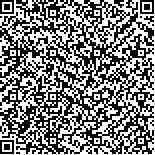| 摘要: |
| [目的]水稻在我国粮食生产中占有重要的地位,针对南方低山丘陵区地形复杂多样,地块破碎的环境特点,利用遥感数据时空融合方法对水稻分布进行提取研究对作物精准估产和政府决策具有重要意义。[方法]以衡阳县为研究区,基于增强型时空数据融合模型(Enhanced Spatial and Temporal Adaptive Reflectance Fusion Model,ESTARFM)将MODIS数据分别和GF-1WFV、Landsat 8影像进行数据融合,构建高时空分辨率的NDVI时间序列集,对NDVI序列进行滤波并获取各地物物候参数,采用决策树分类方法提取水稻种植面积。[结果](1)ESTARFM能有效融合MODIS和GF-1WFV、Landsat 8影像,其中Landsat 8数据的单波段融合效果(RNIR=092,RR=082)优于GF-1WFV融合结果(RNIR=082,RR=075),但NDVI结果相关性差异不大(Landsat:RNDVI=093,GF-1WFV:RNDVI=089); (2)利用决策树分类法进行地物分类,基于GF-1WFV融合数据的分类结果优于Landsat融合数据分类结果,其中GF-1WFV数据得到的分类结果总精度达到8637%,单、双季稻的精度分别为6226%与8670%,Kappa系数达到080; 而Landsat数据的分类总体精度为8096%,单、双季稻精度分别为5687%和7074%,Kappa系数为072。[结论]GF-1WFV融合数据可用于获取精细的水稻种植分布; 针对南方低山丘陵区,特别是地形复杂度较高的区域,GF-1 WFV数据比Landsat数据在水稻提取方面更具有优势。 |
| 关键词: MODISGF-1时空融合南方丘陵区水稻提取 |
| DOI: |
| 分类号:S511 |
| 基金项目:国家自然科学基金项目(41601280); 中央高校基本科研业务费专项资金(2662015QC015) |
|
| EXTRACTION OF PADDY RICE IN HILLY AREA OF SOUTH CHINA BASED ON SPATIAL TEMPORAL FUSION OF GF 1 AND MODIS DATA |
|
Wang Jianxun1, Hua Li1, Deng Shichao1, Wang Huidong2,3, Chen Jiahui1
|
|
1.Research Center of Water and Soil Conservation,Huazhong Agricultural University, Wuhan, Hubei 430070, China;2.1.Research Center of Water and Soil Conservation,Huazhong Agricultural University, Wuhan, Hubei 430070, China;3.2. State Key Laboratory of Information Engineering in Surveying, Mapping and Remote Sensing, Wuhan University, Wuhan, Hubei 430079, China
|
| Abstract: |
| Paddy rice plays an important role in grain production in China. In view of the complex and diverse topography and fragmented land in hilly area of south China, this research aims to extract rice distribution by using the spatiotemporal fusion model of remote sensing data, so as to provide the reference for the accurate estimation of crop yield and government decision making. The research took Hengyang county of Hunan province as the research region. By utilizing the Enhanced Spatial and Temporal the Adaptive Reflectance Fusion Model (ESTARFM) with combination of pairs of MODIS GF1 and MODIS Landsat 8 image, it constructed the NDVI time series with high spatiotemporal resolution. Moreover, it obtained phenological information through filtering NDVI series. In addition, it extracted the rice area by adopting the decision tree classification method. The results showed that (1) ESTARFM could effectively fuse MODIS and GF 1 WFV and Landsat 8 images, the fusion of single band using Landsat 8 data (RNIR=0.92,RR=0.82) was better than GF 1 WFV (RNIR = 0.82, RR = 0.75), the fusion of NDVI both achieved high accuracy (Landsat: RNDVI = 0.93,GF 1 WFV: RNDVI =0.89). (2) The classification of using GF 1WFV fusion data were superior to Landsat fusion data. The overall accuracy of using GF 1 WFV for rice identification was 86.37%, the Kappa index was 0.80. The accuracy of single rice and double rice was 62.26% and 86.70% respectively. For Landsat fusion data, the overall accuracy for rice identification was 8096%, the Kappa index was 0.72. The precision of single and double cropping rice was 56.87% and 70.74%. The extraction method of GF 1WFV fusion data has a good extraction performance in obtainning accurate rice planting distribution. For hilly area of south China, especially in the area with complex and diverse topography, the rice extraction area obtained by GF 1 WFV data has more advantages than by Landsat data. |
| Key words: MODIS GF 1 spatial temporal fusion hilly area of south China paddy rice extraction |

